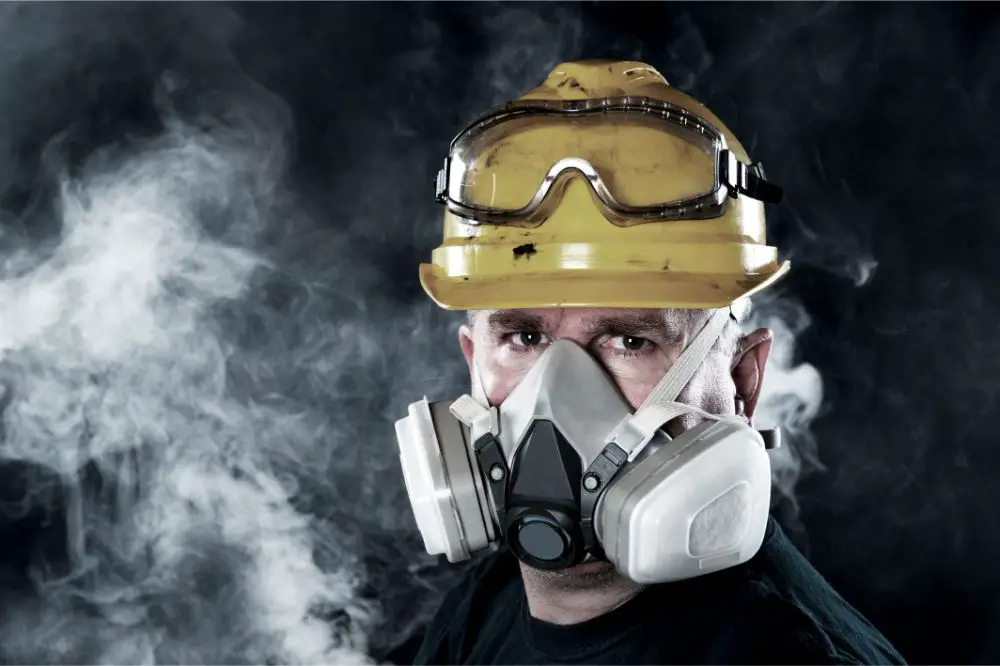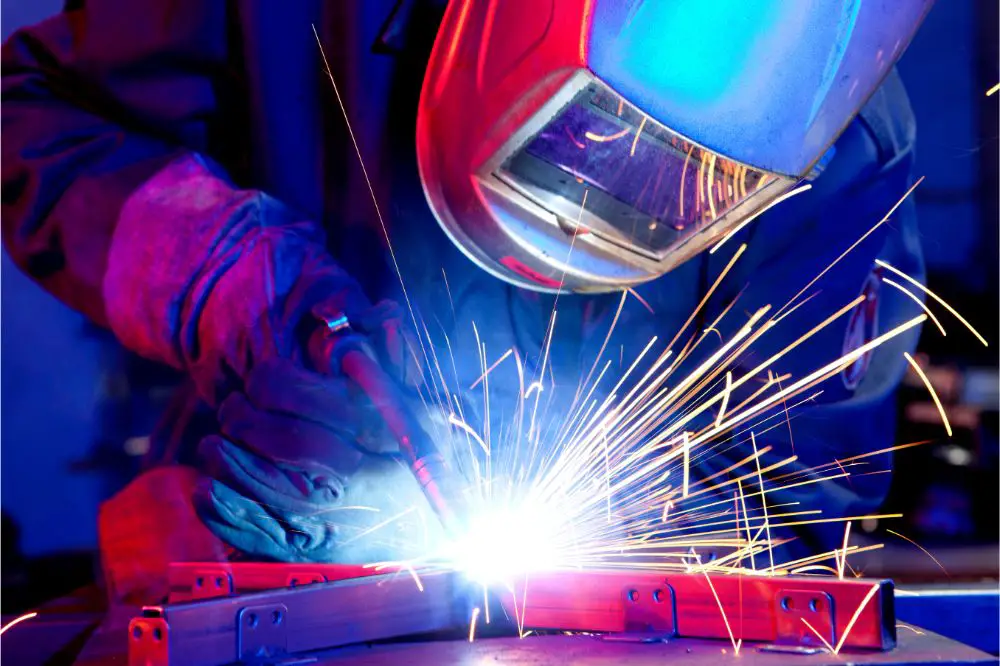It’s widely known that the fumes emitted while welding can cause health hazards over time. These fumes may differ in toxicity depending on the welding you are doing. However, the smoke and fumes present are still harsh on the body and lungs regardless of the amount or process.
With that said, deciding whether to wear a respirator should become a little easier. Yes, wearing a respirator when welding is recommended. In this article, we will discuss the types of respirators one can consider as well as some of the dangers of not wearing one.
What Is Welding Fume?
To begin with, let’s look at what the typical welding fume is made up of so that you have a better understanding of what’s potentially entering your body.
Welding fumes are small but solid particles of metal oxide that are produced as a result of the welding process. Welding is conducted on several types of hazardous metals, each producing its type of toxic fume depending on the welding application and conditions under which the welding is being performed. The gases that are most commonly associated with welding include:
- Carbon dioxide
- Carbon monoxide
- Fluorine compounds
- Zinc oxide particles
- Nitrogen oxide
While most of these gases are present in everyday life, your body and lungs can broadly handle the exposure to moderate quantities like those given off by vehicle exhausts on the roads. However, exposing yourself to those same exhaust fumes in a closed space without proper ventilation for prolonged periods of time would lead to major health hazards, including suffocation and likely death.
Choosing a Respirator
Respirators vary in type, price, and purpose. Therefore, before investing in one, it’s important to know what type of hazard you are exposed to. The Airthings Corentium Home Radon Detector 223 is a great portable option for testing the air quality and ventilation conditions around your home or workshop. This machine measures the toxicity of the various airborne hazards and the amount present in the working environment.
Once you understand the hazard, you’re going to be exposed to, choosing one becomes a little easier. When welding, suitable protective equipment must be worn as a basic precaution. Respiratory protection from welding fumes is available in two primary forms.
Half-Mask Respirators
The most commonly used respiratory protection masks used are the half-mask respirators that became famous during the Covid-19 pandemic. These reusable or disposable masks are designed to be worn under a welding helmet. They provide the required minimum protection factor (RMPF), which is 10.
This means they supply air that is a minimum of 10 times purer and cleaner than you would be breathing unprotected. The 3M Half Facepiece Reusable Respirator 6200 and 3M Reusable Respirator, Half Face Piece 7501, are among the more popular options that are frequently used in many home workshops. Fit testing is recommended for these masks but is not essential.
Welding Helmets
Welding helmets that have integrated powered air-purifying respirators (PAPR) are the most widely used form of respiratory protection amongst professional welders and industries. PAPRs such as the 3M PAPR Respirator are an advanced alternative to disposable respirators and also provide excellent protection and comfort.
These respiratory protectors have an RMPF of 50 for adequate ventilation and can also provide additional eye protection from high-velocity particles and radiation. The flip-up helmet with a powered air respirator provides welders with a clear, uninhibited view. It allows them to work uninterrupted while maintaining the required level of protection.

Dangers of the Welding Process
Okay, now that we can all agree that the fumes produced while welding are dangerous, let’s take a look at some of the most common conditions caused by metal fume inhalation.
Chronic Lung Disease
Emphysema and chronic bronchitis are the most commonly associated lung diseases caused by smoke, metal fumes, and air pollution. The symptoms include shortness of breath, wheezing, or chronic coughing. Damage to the lungs from chronic lung disease cannot be reversed.
Manganism
This is a medical condition associated with Parkinson’s disease, caused by high exposure levels to manganese. Manganese is a hard, brittle, silvery metal, often found in minerals in combination with iron. Manganese toxicity can result in Manganism, a permanent neurological disorder. Symptoms include difficulty walking, tremors, and muscle spasms in the face and neck.
If you catch it early, many Manganism symptoms are reversible provided that exposure is eliminated. But, with continued exposure to these harmful gases over time, the neurological impairments can become permanent.
Cancer
Nickel and chromium compounds are carcinogens for lung cancer. A correlation between lung cancer and exposure to chromates has been shown in several studies (think Erin Brockovich and the PG&E case). The symptoms of lung cancer are vast and well-documented; if not detected early, it will lead to death.
Numerous other, less severe conditions may be caused by harmful fume inhalation, and the effects aren’t always immediately noticeable. This can result in a relaxed behavior being adopted around welding sites concerning safety and air quality. This is never advisable as the substances emitted when welding metal are extremely dangerous and should always be dealt with and managed according to the most updated safety standards.
Here are some of the early and less severe effects of fume inhalation:
- Skin or eye irritation
- Gastrointestinal effects
- Nausea
- Fever/ chills
- Head and body ache
- Pulmonary edema
Conclusion
The idea of wearing a respirator mask is always a good one, even if the “tough” guys don’t agree, but protecting your own health is a respectable decision. Respirators, like most PPE, come in different sizes and styles, and deciding upon the right option will require some consideration concerning the amount and type of exposure you will be subjected to.
Some welding hoods come with a respirator built into them and are very useful but can be a little more expensive than reusable options. If you plan on welding regularly, then it is wise to think about the type and amount of fumes you will be exposed to over the years. Your future self will thank you in the end.

